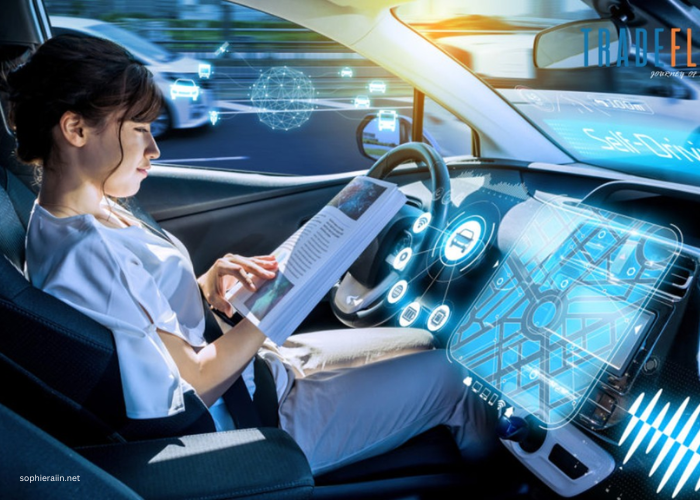Autonomous vehicles, commonly known as self-driving cars, represent a revolutionary shift in transportation technology. They promise to transform the way we move, reduce traffic congestion, enhance road safety, and provide unprecedented mobility solutions for people of all ages and abilities. As technology continues to advance at a rapid pace, the vision of a driverless future is becoming increasingly tangible. This article delves into the evolution, current state, and future potential of autonomous vehicles, exploring the challenges and opportunities that lie ahead on the road to a driverless future.
The Evolution of Autonomous Vehicles
The concept of autonomous vehicles is not new. The idea dates back to the early 20th century, with science fiction writers imagining a future where cars could drive themselves. However, it wasn’t until the late 20th century that technological advancements made this vision a realistic possibility. The development of sensors, machine learning algorithms, and advanced computing power laid the foundation for the modern era of autonomous vehicles.
In the 1980s and 1990s, major car manufacturers and research institutions began experimenting with automated driving technologies. Early prototypes relied on rudimentary sensors and computer systems, but they paved the way for more sophisticated designs. The DARPA Grand Challenge, a series of competitions held in the early 2000s by the U.S. Defense Advanced Research Projects Agency (DARPA), was a pivotal moment in the evolution of autonomous vehicles. These competitions demonstrated the feasibility of autonomous driving and spurred significant investment in research and development.
Current State of Autonomous Vehicle Technology
Today, autonomous vehicle technology has advanced far beyond its early prototypes. Modern self-driving cars use a combination of sensors, cameras, radar, and lidar (light detection and ranging) to perceive their environment and navigate safely. Machine learning algorithms process vast amounts of data in real-time, enabling these vehicles to make complex decisions based on their surroundings.
Autonomous vehicles are classified into different levels of automation, ranging from Level 0 (no automation) to Level 5 (full automation). Currently, most commercially available autonomous vehicles are at Level 2 or 3, which means they can perform some driving tasks independently but still require human supervision. For instance, Tesla’s Autopilot and General Motors’ Super Cruise offer partial automation, allowing the vehicle to steer, accelerate, and brake under certain conditions. However, a human driver must remain attentive and ready to take control at any moment.
The progress toward full autonomy (Level 5) is ongoing, with companies like Waymo, Cruise, and Baidu testing fully autonomous vehicles in select cities around the world. These vehicles are equipped with advanced sensor suites and rely on detailed maps and continuous updates from the cloud to navigate complex urban environments. While fully autonomous vehicles are not yet available for general consumer use, they are being deployed in limited trials, primarily in ride-hailing and shuttle services.
Benefits of Autonomous Vehicles
The potential benefits of autonomous vehicles are vast and far-reaching. One of the most significant advantages is improved road safety. According to the World Health Organization, approximately 1.3 million people die each year due to road traffic accidents, with human error being a leading cause. Autonomous vehicles have the potential to significantly reduce these numbers by eliminating driver errors caused by fatigue, distraction, or impaired driving. Autonomous systems are designed to be constantly vigilant, making decisions based on data and logic rather than human emotion or bias.
Another key benefit is increased mobility for people with disabilities, the elderly, and those who are unable to drive. Autonomous vehicles can provide greater independence and accessibility, allowing these individuals to travel more freely and conveniently. This could have profound social and economic implications, as it would enable more people to participate in the workforce and access essential services.
Autonomous vehicles also promise to reduce traffic congestion and improve fuel efficiency. By optimizing driving patterns and reducing the need for sudden stops and starts, self-driving cars can contribute to smoother traffic flow and lower emissions. Moreover, the widespread adoption of autonomous vehicles could lead to more efficient use of road space and reduce the need for parking, freeing up valuable urban land for other purposes.
Challenges and Barriers to Adoption
Despite the potential benefits, several challenges and barriers must be overcome before autonomous vehicles become a mainstream reality. One of the primary challenges is technological. Developing reliable and safe autonomous systems that can handle the complexities of real-world driving is a monumental task. Self-driving cars must be able to navigate unpredictable situations, such as sudden weather changes, erratic behavior from other drivers, and unexpected obstacles. Achieving full autonomy requires advancements in artificial intelligence, machine learning, and sensor technology, as well as robust testing and validation protocols.
Regulatory and legal challenges also pose significant hurdles. Current laws and regulations around the world are not fully equipped to handle the unique characteristics of autonomous vehicles. Policymakers must establish new frameworks to address liability issues, data privacy concerns, and cybersecurity risks. Additionally, there is a need for international cooperation to create standardized regulations that facilitate cross-border movement of autonomous vehicles.
Public perception and acceptance are another critical challenge. Many people are still wary of self-driving technology, primarily due to safety concerns. High-profile accidents involving autonomous vehicles have raised questions about their reliability and trustworthiness. Building public confidence will require transparent communication about the technology’s capabilities and limitations, as well as demonstrating its safety through rigorous testing and real-world deployment.
The Road Ahead: Future Prospects of Autonomous Vehicles
Looking ahead, the future of autonomous vehicles is promising, but it will likely unfold gradually over the coming decades. In the near term, we can expect to see more autonomous features integrated into conventional vehicles, such as advanced driver-assistance systems (ADAS) that provide greater automation for specific driving tasks. These systems will continue to improve, making driving safer and more convenient.
As technology matures and regulatory frameworks evolve, fully autonomous vehicles will become more common in controlled environments, such as urban centers, airports, and corporate campuses. Shared autonomous vehicle fleets could become a popular mode of transportation, particularly in densely populated cities where space and resources are limited. This could lead to the rise of “mobility as a service” (MaaS) models, where people opt for shared, on-demand autonomous vehicles instead of owning personal cars.
In the long term, the widespread adoption of autonomous vehicles could fundamentally transform urban planning and infrastructure development. Cities could be redesigned to prioritize pedestrians and cyclists, with less space dedicated to roads and parking. The concept of “smart cities” could become a reality, where autonomous vehicles interact seamlessly with other urban systems to optimize traffic flow, reduce pollution, and enhance the overall quality of life.
Conclusion
Autonomous vehicles are poised to revolutionize transportation and reshape our cities, economies, and societies. While significant challenges remain, the potential benefits of a driverless future are too great to ignore. As technology continues to advance, and as regulatory and societal barriers are addressed, the road to a driverless future will become clearer. The journey may be long and complex, but the destination promises to be one of unprecedented innovation, safety, and convenience. The era of autonomous vehicles is not just a distant dream—it’s a rapidly approaching reality that will redefine how we move and live in the 21st century.



